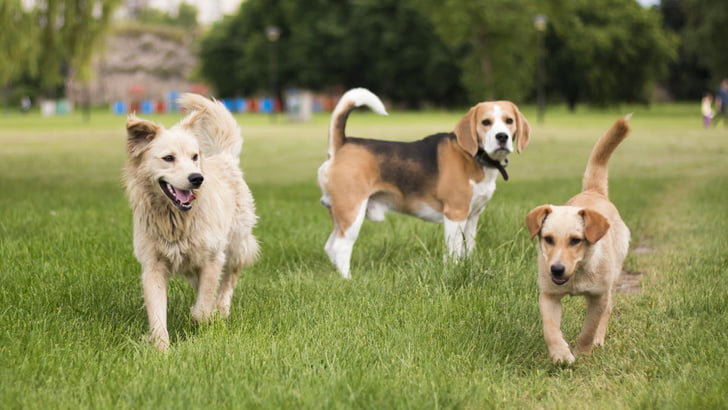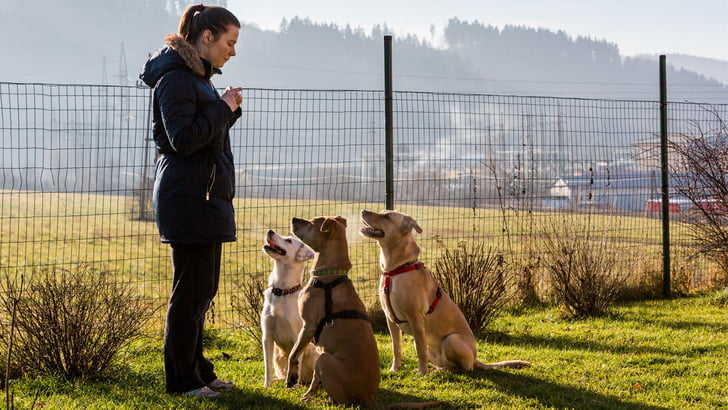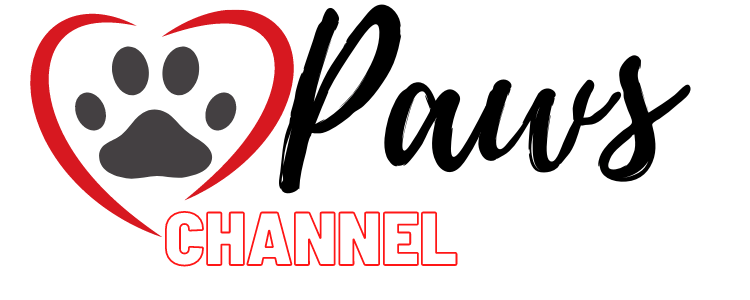7 tips against leash aggression in dogs
Leash aggression in dogs: A relaxed walk is hardly possible with a dog that immediately jumps on the leash and barks furiously when another conspecific approach. Read here how to leash aggression develops in dogs and how you and the dog learn to deal with other dogs’ encounters on a leash in a relaxed manner.
Leash aggression in dogs can take various forms and degrees of severity. For the owner of an aggressive dog on a leash, the walk quickly becomes an absolute stressful situation when another dog appears in the distance. Because in particularly severe cases of line aggression …
- … the dog freaks out completely at the sight of another dog
- … jumps on the leash with all his strength
- … is just difficult to hold
- … growls and barks.
You can quickly find yourself in situations where it makes sense to be familiar with dogs’ current legislation.
Some dogs only react aggressively to leash with certain dogs (distinctive color, size, specific gender); they are completely relaxed with others. Dogs that are friendly to other dogs in the open air and play on friendly terms with them can also look like they have been changed on a leash.
The leash’s aggressiveness can develop into a very stressful problem for both dog and owner in the long run. To stop the dog’s leash aggression, the cause of its behavior should first be clarified.
This could also be of interest to you: Breathable Transparent Backpack For Puppy Cat
Causes of leash aggression in dogs

Leash aggression in dogs
The dog’s leash aggression can have very different causes. It is not always possible to find out which experience was so traumatic for the dog that it began to defend itself massively against other dogs on a leash. These are the main causes of aggression towards other dogs :
- Bad experience on a leash: the dog was bitten, hurt, is very scared, and has linked this traumatic experience with meeting another dog.
- Lack of experience: The dog has had little contact with other dogs so far; he is insecure and feels restricted by the leash and threatened by the other dog.
- Frustration: The dog really wants to go to the other dog, sniff him and play with him. Because he is not allowed to go, he reacts more and more aggressively (often the trigger for leash aggression in young, very playful dogs).
- Transmission of mood: The dog handler is tense, fears meeting another dog himself because he already knows what will come next. The tension is transferred to the dog.
- Breed-typical predispositions: Dogs specially bred for guarding and protecting are very territorial and can more easily develop leash aggression.
Seven tips against leash aggression in dogs
Once the dog has developed leash aggression, it takes a lot of patience and consistent training to turn it off again. These 7 tips can help you:
1. Clarify the cause of line aggression
In the case of line aggression, research into the cause is important. Answer the following questions and write down the answers on a piece of paper:
- Has the dog been attacked, injured, or bullied?
- Does he show this behavior from the start?
- Are there only certain dogs/genders he reacts to?
- Is the only angry when he’s on a leash or when he’s free?
2. Commands steer from the situation
Reconditioning an aggressive dog on the leash takes time and patience. But above all, consistency and education. Think of something for the dog to do instead of tugging on the leash. Sit down, lie down, turn in a circle, give a paw. He should be happy to execute the command and already be able to do so properly.
From then on, with every expression of aggression towards another dog, you will immediately hear your sharp “No!”, Followed by a nice request “Sit, down, top, paw …” There are dogs that have the alternative of their own accord after ten to twenty such exercises to offer. Others take longer to link properly: a dog comes, I sit down.
This could also be of interest to you: Anti-Lost Waterproof Tracker For Dog Cat Kids Car Wallet Key
3. Treat other dogs in a friendly manner
Turning a dog’s negative feelings inside out can be a good practice. It would help if you had an infinite number of special treats and a keyword such as “Have a look” or “Hmm, delicious.” Then it is important to find routes that offer you enough alternatives, but where there are still dogs in the distance, for example, near a dog meadow.
Now they go until a dog appears very far away, and in the same second, but the delicacy in the dog’s mouth at your keyword. Then move away. After a few such exercises, you will pass the other dog a few meters closer and work with the code word and bite again. The point: Your dog registers the other dog, who is still too far away for his reaction, and involuntarily associates him with something positive. It may take a while to get through to him: Another dog insight means a treat.
4. Stay relaxed yourself

Leash aggression in dogs
Anyone who has almost been knocked over by their dog a few times because they threw themselves in a harness or collar is nervous on walks and scans the area for possible dog encounters. The dog assumes the human stress level 1: 1, clearly tenses, and prepares for the next attack. A spiral that only you can interrupt:
- Make a conscious effort to focus on your goal, not the surroundings.
- Breathe calmly and evenly.
- Think of something nice.
- Smile
You will be amazed at the effect.
This could also be of interest to you: Cat & Dog Nail Scissors With LED Lights
5. Create more important tasks
Distracting aggressive dogs on leash is exhausting, but in some dogs, it also solves the problem. When walking together, you draw your dog’s attention permanently to you.It works like this, for example:
- Run around trees in pairs
- Let the dog find treats within easy reach of the leash.
- If the dog likes to fetch, he should pick something up and carry it now before giving it to you.
Important: The dog enjoys your undivided attention and vice versa. Other dogs become unimportant; only the world now revolves around you.
6. Avoid serious problems
If two males or two bitches are personally spider enemies, so your dog only reacts aggressively to this one archenemy, all exercises are of no use. That is a special case. It is best to coordinate with the other dog owner and avoid each other as much as possible.
7. Request support from the behavioral trainer
Special training has many advantages. In a fenced area, dog encounters are never accidental but are provoked. Special trainers always have a peaceful dog with strong nerves who reacts to aggression on a leash with equanimity. And they not only observe and treat the dog but you too. Before you run out of your nerves, special training under experienced eyes is definitely worth considering.
The right harness for aggressive dogs
The behavior of an aggressive dog on a leash will not change overnight. Even if you try to avoid other dogs consistently, another dog may suddenly appear. In addition to consistent behavioral training, the right equipment can also help you keep better control when encountering other dogs.
Read Also: That is what makes high-quality dog clothing
Collar or harness for the dog?
Experts recommend a well-fitting harness for dogs that are aggressive on the leash. If the dog jumps into the collar with all its strength when it spots a conspecific, it can be harmful to its health. At this moment, he feels pain and shortness of breath but does not associate this with his own reaction, but with the appearance of the other dog. The dog is also set up by pulling the collar to the front, which is also threatening for the oncoming dog.
The right leash
The leash for aggressive dogs should meet the following requirements:
- It should be stable.
- It should be comfortable to hold.
- It should be a comfortable length.
The dog should be given enough space to sniff in a relaxed manner, but the leash must not be so long that if it suddenly encounters another dog, it can start immediately and pull the handler off his feet by running up. A Flexi leash is unsuitable for dogs that are aggressive on the leash because it cannot be fixed quickly enough in dangerous situations.
Does an aggressive dog on a leash have to wear a muzzle?
A muzzle can provide security for dogs that are aggressive on the leash and like to pounce on other dogs. In this way, the dog handler can be sure that his dog cannot injure another dog, even if the leash would slip away. The dog handler is often much more relaxed, and that this positive mood is transferred to the dog. Before the dog is supposed to go for a walk with a muzzle, it must slowly be accustomed to wearing a well-fitting muzzle.

